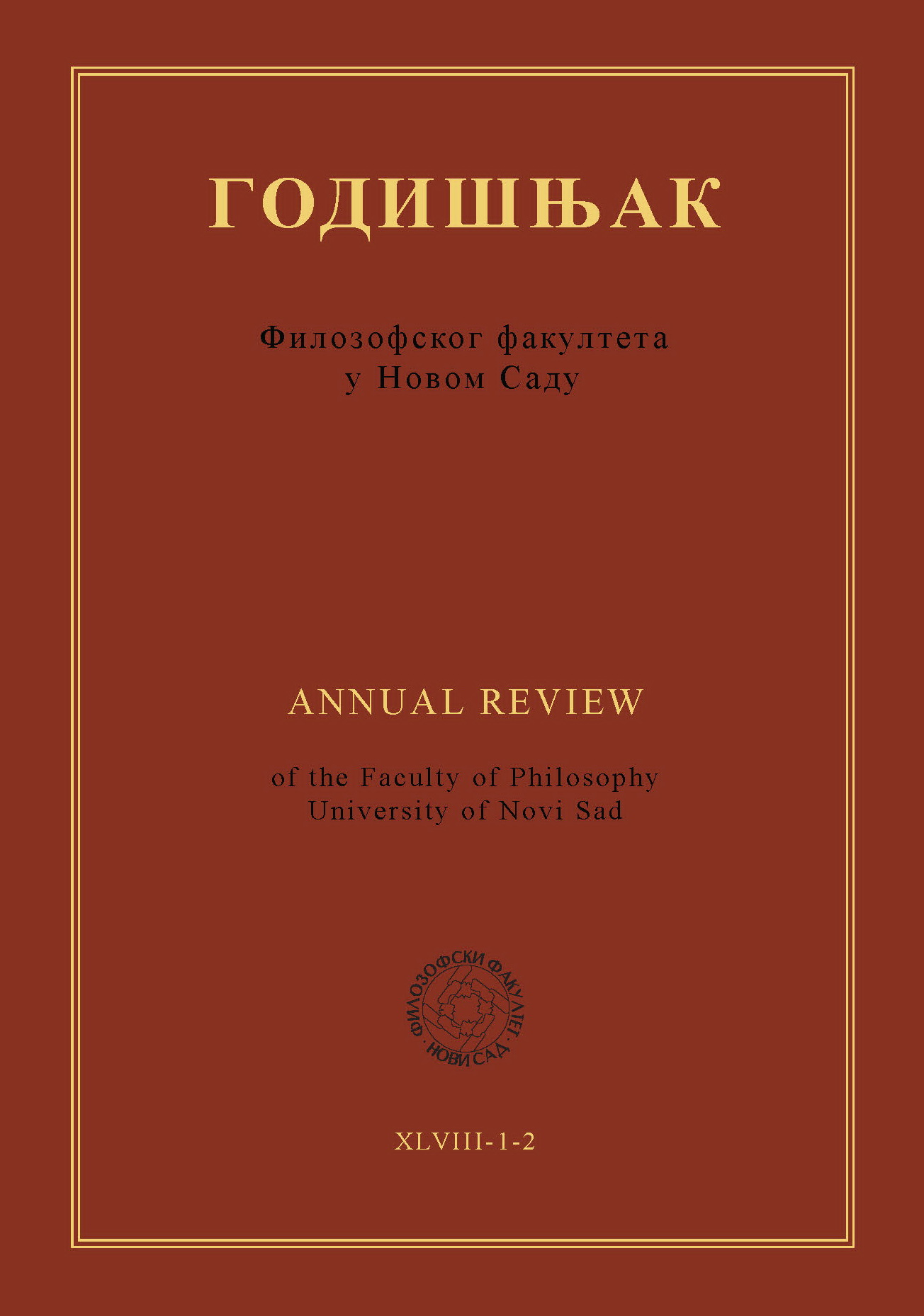THE IMAGE OF THE SERBS IN THE STORY “NOCHE SERVIA” BY BLASCO IBÁÑEZ
Main Article Content
Abstract
In the present article, following the theoretical approaches of literary imagology, we propose to interpret how Vicente Blasco Ibáñez, Spanish author, is constructing the image of the Serbs in his story "Noche servia", published in the book El préstamo de la difunta y otros cuentos (1921). The first time this author from Valencia left written some impressions on Serbian people was in 1907 when he travelled from France to Turkey and spent few days in Serbia. The result of this travel was the travelogue Orient where he presented very negative image of Serbian people. With the First World War, Blasco Ibáñez changed his perspective and built a positive image of the Serbs, as described in Historia de la Guerra Europea (1914-1921) and later on in the story "Noche servia". In this article we are making a synchronous analysis of the Serbian image, that is, we will focus our attention on the story "Noche servia" with some references to images constructed in other writings of this Spanish author. As a starting point for this study, we discuss ideas pronounced by relevant theoretics of imagology. We underline that the image of the Other is a construct, a representation that has a discursive nature that needs to be questioned. By analysing the structure of the story, the position and the impact of changing the position of the narrator, as well as the analysis of the discourse used in the story, we will interpret how the image of Serbian people is being constructed under specific personal and ideological influences on Blasco Ibáñez. We conclude that author’s Francophilia had the decisive impact on his last writing on Serbian people leaving a positive image of them.
Downloads
Article Details

This work is licensed under a Creative Commons Attribution-ShareAlike 4.0 International License.
References
Blasco Ibáñez, V. (1920). Historia de la Guerra europea, Vol. I–IX, Valencia: Prometeo.
Blasco Ibáñez, V. (1919). Oriente. https://www.gutenberg.org/cache/epub/40182/pg40182-images.html
Blasco Ibáñez, V. (1921). Noche servia. En: El préstamo de la difunta. https://www.gutenberg.org/files/14308/14308-8.txt
Fischer, M. (2009). Komparatistička imagologija: za interdisciplinarno istraživanje nacionalno-imagotipskih sustava. U: Dukić, D. –Blažević, Z. –Plejić Poje, L. & Brković, I. (ured.) (2009). Kako vidimo strane zemlje: uvod u imagologiju. Zagreb: Srednja Europa. 37–56.
Leersen, J. (2007). Type, typicality. In: Beller, M. –Leerssen, J. (eds.) (2007). Imagology. The cultural construction and literary representation of national characters: a critical survey. Rodopi: Amsterdam/New York. 450–451. DOI: https://doi.org/10.1163/9789004358133_121
Leersen, J. (2009a). Imagologija: povijest i metoda. U: Dukić, D. –Blažević, Z. –Plejić Poje, L. & Brković, I. (ured.) (2009). Kako vidimo strane zemlje: uvod u imagologiju. Zagreb: Srednja Europa. 169–186.
Leersen J. (2009b). Odjeci i slike: refleksije o stranom prostoru. U: Dukić, D. –Blažević, Z. –Plejić Poje, L. & Brković, I. (ured.) (2009). Kako vidimo strane zemlje: uvod u imagologiju. Zagreb: Srednja Europa. 83–98.
Leersen, J. (2009c). Retorika nacionalnog karaktera: programatski pregled. U: Dukić, D. –Blažević, Z. –Plejić Poje, L. & Brković, I. (ured.) (2009). Kako vidimo strane zemlje: uvod u imagologiju. Zagreb: Srednja Europa. 99–124.
Leersen, J. (2016). Imagology: On using ethnicity to make sense of the world, Iberic@l, Revue d’études ibériques et ibéro-américaines, 10, 13–31.
Martí Monterde, A. (2005). Literatura comparada. En: Llovet, J. et al. (eds.) (2005). Teoría literaria y literatura comparada. Barcelona: Ariel. 333–406.
Mendez Coutinho, A. P. (2000). Representação do outro e identidade: um estudo de imagens na narrativa de viagem. Imagologia literária: contornos históricos e princípios metodológicos, Cadernos de literatura comparada, I, 93–100.
Moura J.-M. (2009). Kulturna imagologija: pokušaj povijesne i kritičke sinteze. U: Dukić, D. –Blažević, Z. –Plejić Poje, L. & Brković, I. (ured.) (2009). Kako vidimo strane zemlje: uvod u imagologiju. Zagreb: Srednja Europa. 150–168.
Pageaux, D-H. (2007). El corazón viajero (Doce ensayos sobre literatura comparada). Lleida: Pages editors.
Pagauex, D-H. (1994). De la imaginería cultural al imaginario. En: P. Brunel, P. & Chevrel, I. (eds.) (1994). Compendio de literatura comparada. Madrid: Siglo XXI ediciones. 101–131.
Pérez Gras, M. L. (2016). Imagología: La evolución de la disciplina y sus posibles aportes a los estudios literarios actuales. Enfoques: Revista de la Universidad Adventista del Plata, 28/1, 9–38.
Rodríguez Magda, R. M. (2014/15). Blasco Ibáñez durante la I Guerra Mundial. Una experiencia literaria y cinematográfica. Revista de Estudios sobre Blasco Ibáñez / Journal of Blasco Ibáñez Studies, 3, 213–225.
Sekulić, M. (2019). Španija Miloša Crnjanskog: imagološka studija. Kragujevac: FILUM.
Sindram, K. U. (2009). Estetika alteriteta: književnost i imagološki pristup. U: Dukić, D. –Blažević, Z. –Plejić Poje, L. & Brković, I. (ured.) (2009). Kako vidimo strane zemlje: uvod u imagologiju. Zagreb: Srednja Europa. 71–82.
Vidaković-Petrov, K. (2009). Srpska tema u delu Visentea Blaska Ibanjesa. Filološki pregled, XXXVI, 1, 39–55.




